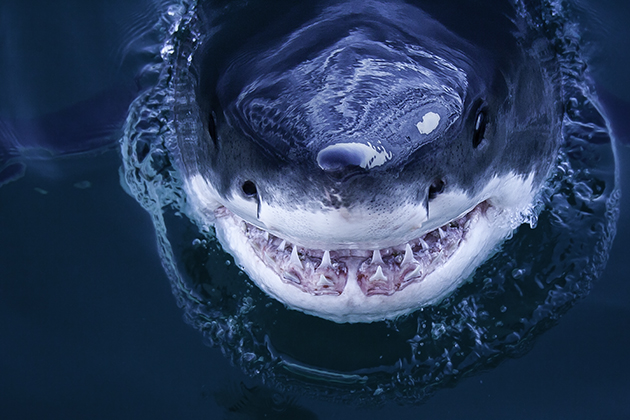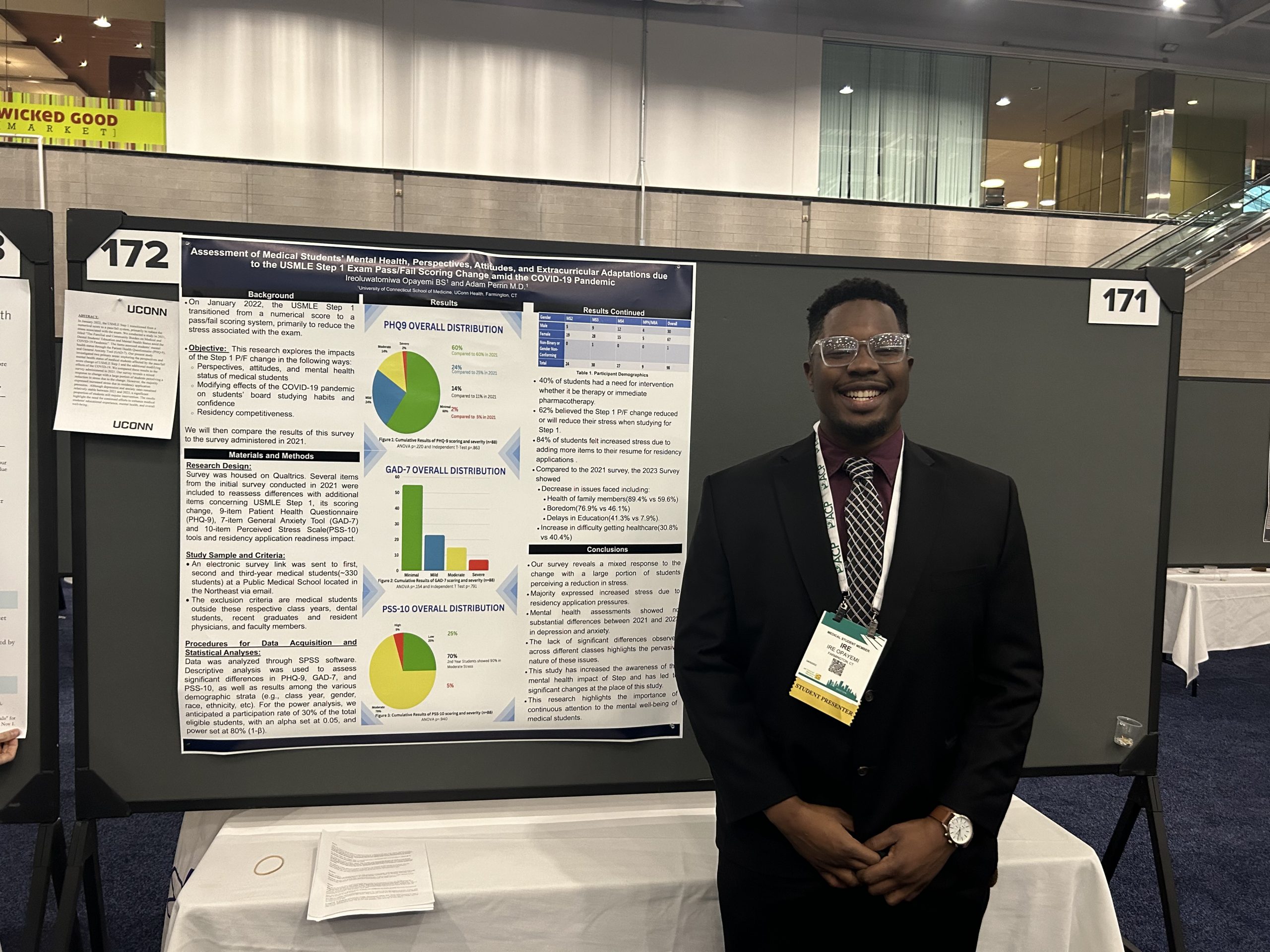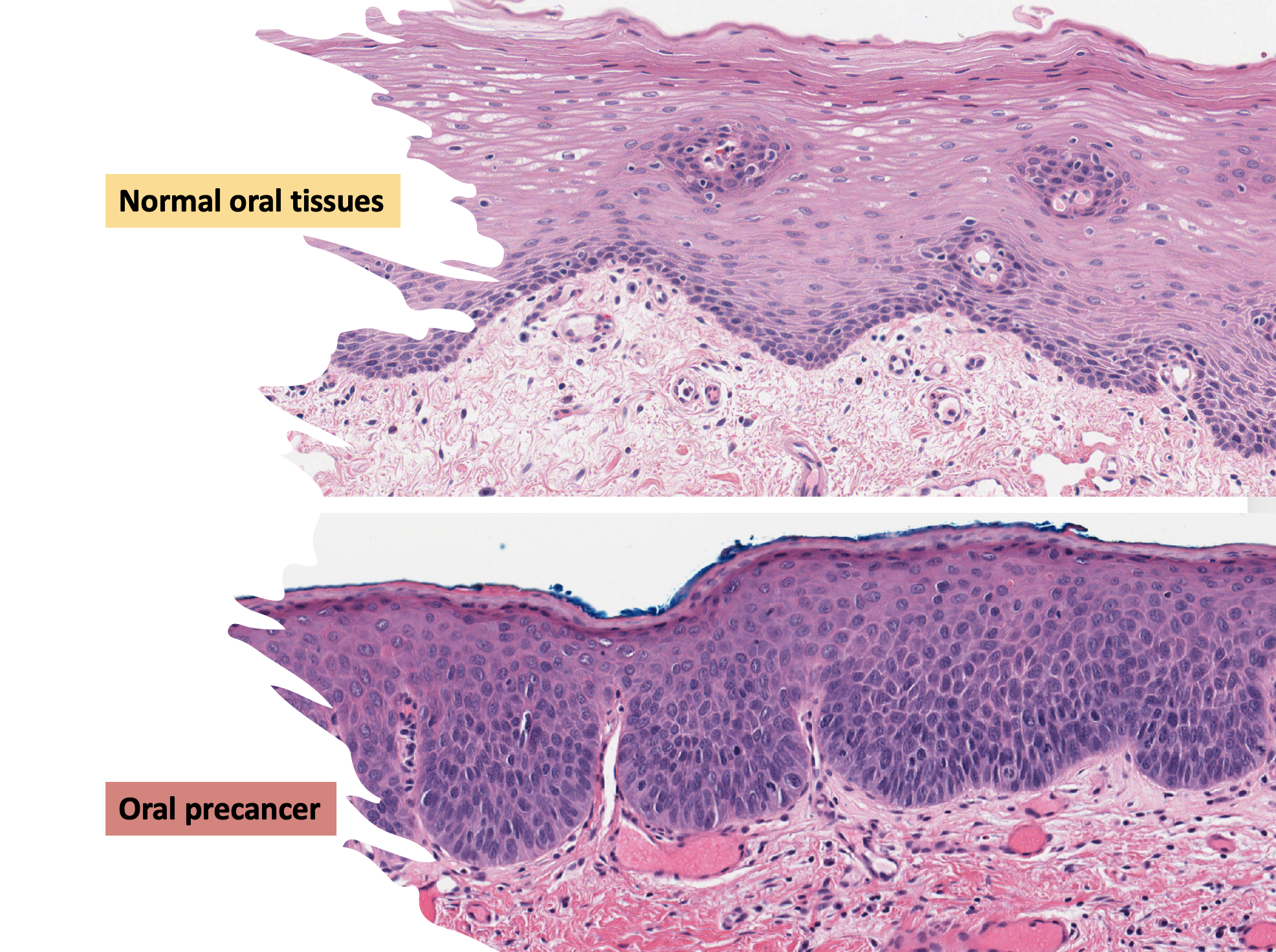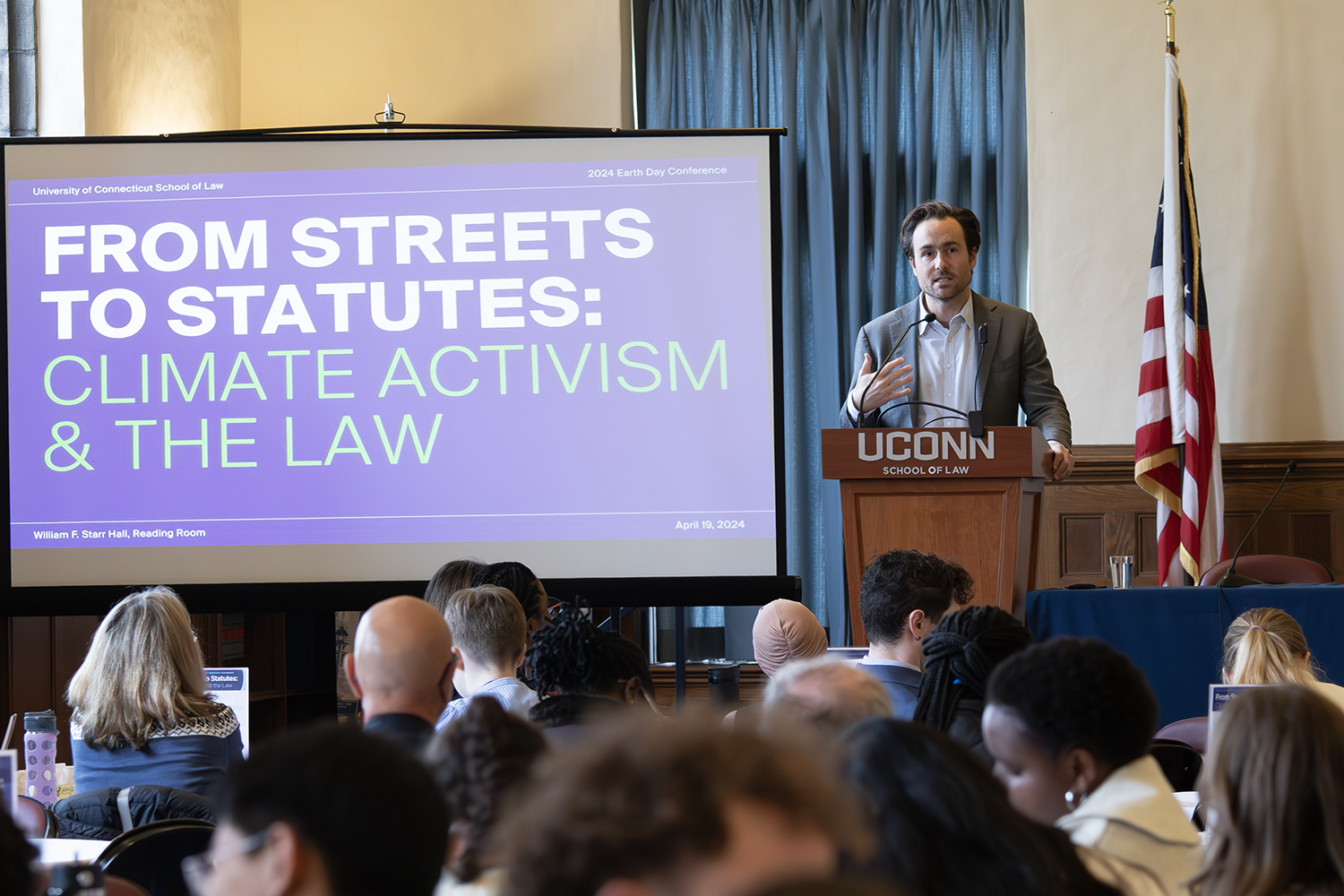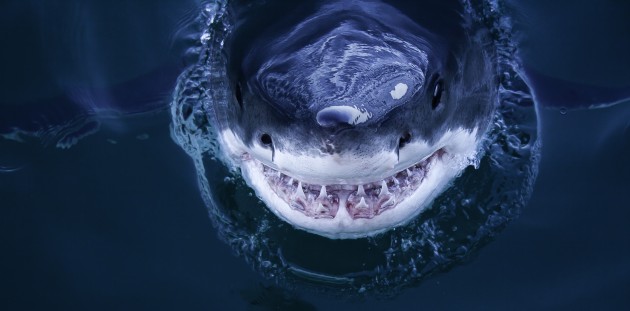
Spending up to 13 hours a day traversing shark-infested waters may be far from your notion of an ideal career. Not so for UConn alum Chris Perkins ’12 (CLAS), co-founder and director of research for nonprofit Shark Bay Research Trust in South Africa. Working with cage-diving and educational tour operation Sharklady Adventures near Gansbaai, Perkins has taken his UConn marine sciences degree to the seas, launching pioneering research focused on great white sharks.
Despite their much-maligned reputation as terrifying predators, sharks face a far greater danger in humankind. Every year, an astounding 100 million sharks are killed, with most dying as a result of illegal poaching or drowning in commercial fishing nets. Perkins hopes his work will not only help in changing the public’s negative perceptions of great whites and other shark species, but also in raising awareness about their most serious threat: people.
And yet while sharks are essential to maintaining healthy ocean ecosystems, in part by keeping populations of their prey in check, many misconceptions regarding these endangered animals persist – two in particular that Perkins would like to see eliminated altogether: the notion that they are mindless killing machines, and the suggestion that they have a taste for people. “I would love to have those ideas replaced with things like how intelligent and curious sharks are,” he says.
Underwater adventures
Working aboard the boat of cage-diving operation Sharklady Adventures, Perkins is no stranger to shark encounters. At the height of tourist season, he typically is out on the water seven days a week, educating tourists and preparing them for their diving experience. Once a shark arrives – which can sometimes be two to three hours into a trip – passengers donning wetsuits and masks are loaded into cages partially immersed in the water alongside the boat.
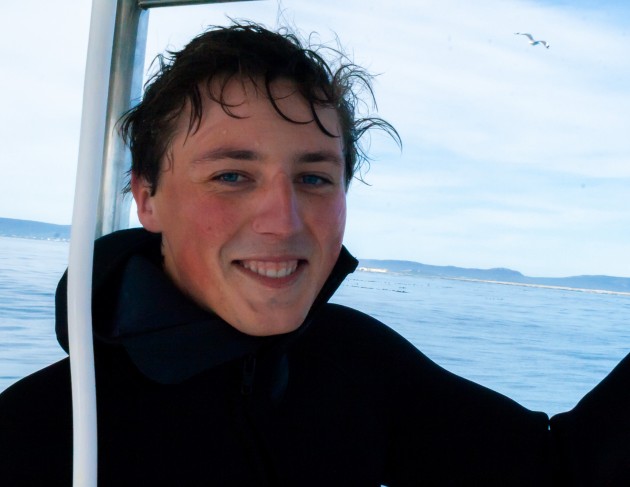
To attract great whites, the cage-diving industry traditionally relies on the use of chum, a soupy blend of fish oil, blood, and offcuts diluted with seawater and dispersed in the boat’s wake. Sharks that catch the scent of the chum trail may then approach to investigate further, giving tourists in the cage an exhilarating opportunity to view the animals up close from underwater. (See an assortment of Perkins’ video clips at s.uconn.edu/sharkvideos.)
“We have a tuna head on the end of a rope as a bit of a visual target for the shark. We’ll use it just to coax the sharks in a little bit closer to the cage so that the people in the water can actually see the shark,” Perkins says. “We don’t feed or intentionally reward the sharks for visiting the boat, but if they decide they want the bait, it makes our lives a little more interesting.”
Some assert that the use of chum may inadvertently train sharks to associate humans with food, but Perkins points to past studies refuting such claims. “It’s this stigma that’s prompting my research,” he says. “When the sharks come to the boat, it’s more like a scavenging situation. They’re not really in a hunting mode. They swim around the boat; they try to figure out what it is. To the sharks, the boat, the cage, and the people inside the cage are all the same thing.”
From Perkins’ perspective, the downside of using chum is actually the ongoing expense to cage-diving companies, which he sees as essential to enlightening the public about sharks and their plight. In an effort to eliminate the industry’s use of chum while potentially improving the frequency of shark sightings, he is seeking to attract sharks to the boat in an entirely new way – with sound.
Sound thinking
Perkins is now leading groundbreaking research into the specific types of sounds that great whites may find most attractive. By playing specific sounds underwater, from artificial sounds within certain frequencies to recordings of Cape fur seals swimming and sounds of injured prey, Perkins will begin to explore which noises appeal most to great whites.
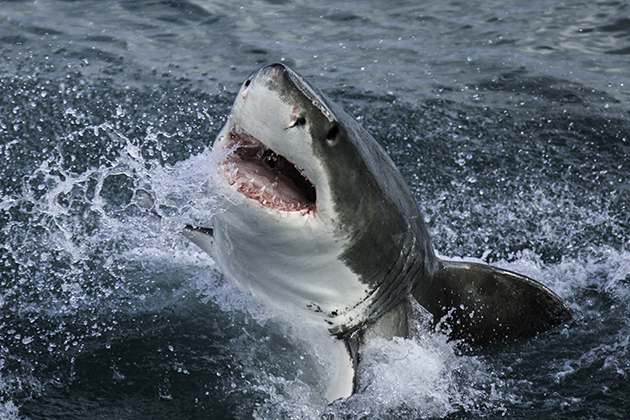
“There’s a lot that we don’t know about white sharks, so I’m taking my best guess as to what sounds they would listen for, for food,” says Perkins, whose theories have attracted the interest and direct involvement of Andre Hartman – a world-renowned white shark expert famed for his unprotected free dives with great whites – and the South African Institute of Maritime Technology, which offers specialized knowledge in underwater acoustics.
“Essentially, I want to know what sounds are the most attractive to white sharks, with the end goal of potentially reducing the amount of chum used in the commercial cage-diving industry, or replacing it all together,” he says.
Ultimately, relying on sound to draw great whites would not only prove more cost-effective for cage-diving operations, but could also reflect more positively on the industry itself, defusing much of the controversy around the use of chum. At the same time, perhaps greater numbers of tourists could benefit from more frequent opportunities to observe this misunderstood species.
Having a chance to work closely with these iconic animals, Perkins admits, is a rarity in this particularly competitive area of marine science research. While he founded Shark Bay Research Trust last year to help fund his research, he is also eager to provide other aspiring marine scientists with valuable hands-on experience. “We hope to offer support to other up-and-coming researchers who might be working on their master’s degree or doctorate, or who might just want to do an internship,” says Perkins, a current graduate student at the University of Cape Town.
Regardless of whether his theories prove to be accurate, Perkins considers himself fortunate. “I have put my degree in marine sciences to very good use here, and I believe that the thorough grounding UConn gave me in marine physics, marine chemistry, and marine biology is invaluable with what I do,” he says. “When I wanted to work with sharks, I wasn’t expecting to do anything like this. I’m very lucky.”
To learn more, visit sharkbayresearch.org, and watch an assortment of Perkins’ video clips at s.uconn.edu/sharkvideos.
